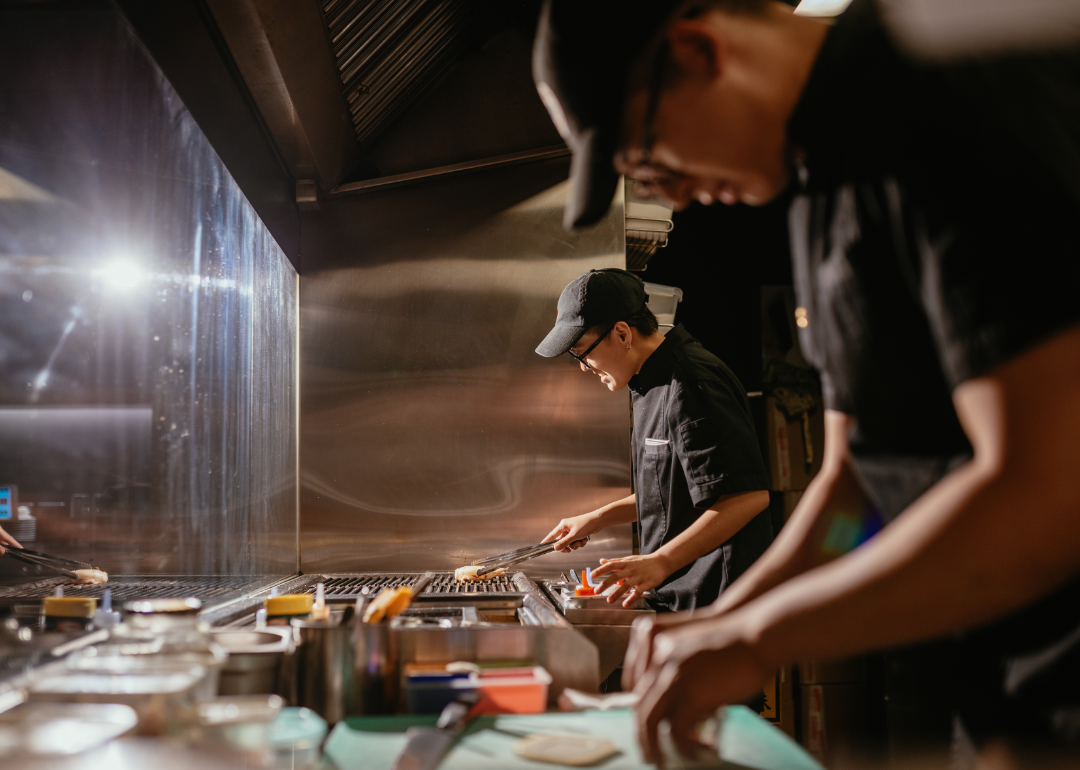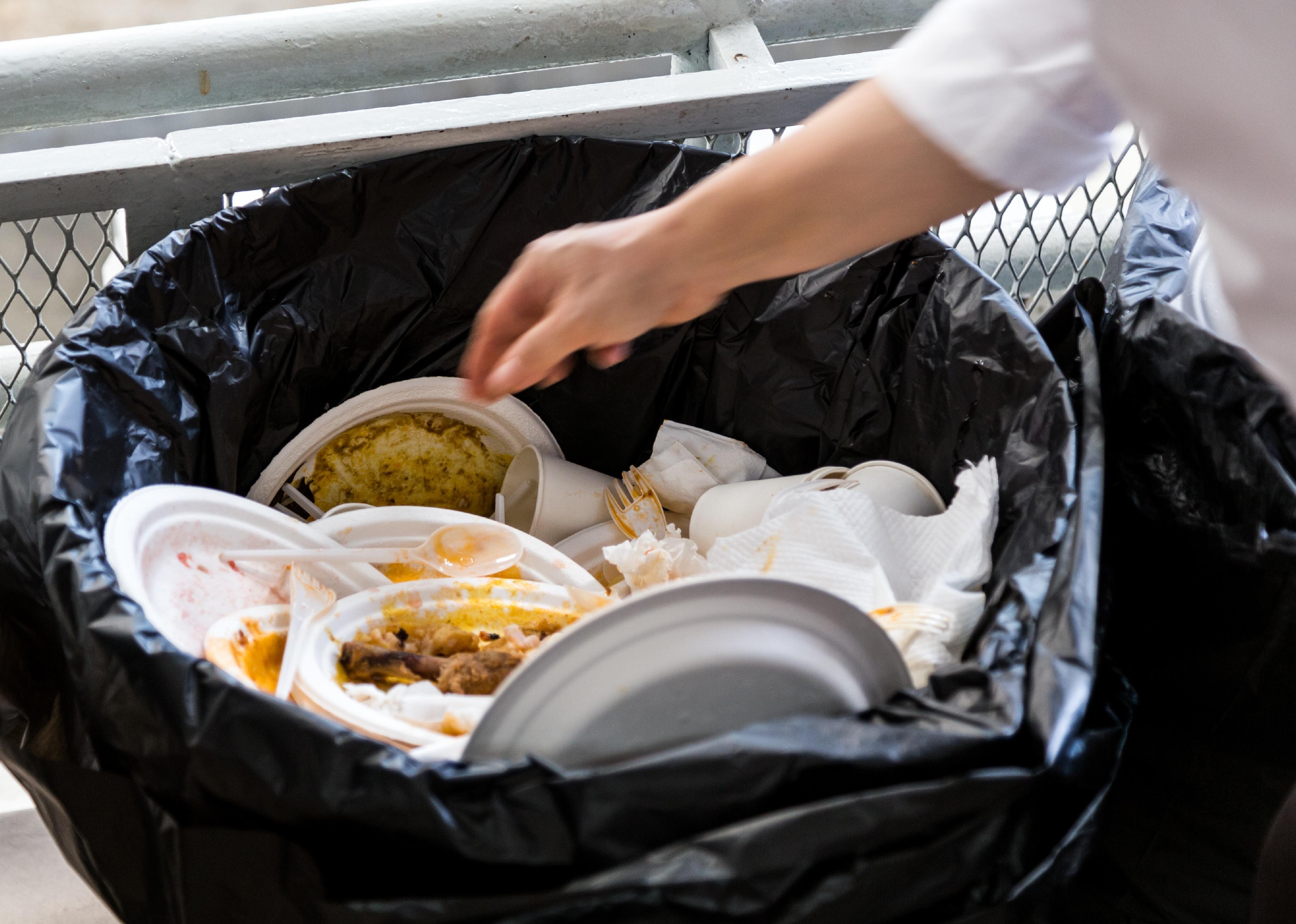What happens to the tons of food waste restaurants generate
ThamKC // Shutterstock
What happens to the tons of food waste restaurants generate
Hand throwing away styrofoam plates and cups in plastic bag.
Ever finished less than half of your plate at a restaurant and wondered what happens to the rest?
Food waste, substances intended for human consumption that are discarded or recycled, is a part of our everyday lives. Whether it’s an unfinished meal out, spoiled food in the fridge, or inedible parts of produce like peels and rinds, discarding is normal. But in large quantities, it has a significant potential impact on the environment.
As a result, the U.S. Department of Agriculture and the Environmental Protection Agency announced has plans to cut food waste by half by 2030.
The challenge lies in the fact that people send most food waste to landfills rather than composting waste, which helps reduce greenhouse gas production. A large percentage of this food waste comes from individual houses — 44% according to a EPA report — but only so much of the problem is fixable by consumers.
Restaurants are the next most common food-wasters, generating nearly one-third of the country’s total waste. While a small portion of restaurant food waste is composted or donated, most is disposed of via incineration or landfill.
Next Insurance examined data from the EPA’s annual Wasted Food Report to see what happens to food waste generated by restaurants in the United States. The report, released in April 2023, shows yearly totals from 2019.
![]()

Next Insurance
Restaurants are the second-largest source of food waste
A bar chart showing how restaurant food waste is disposed of in the U.S.
Landfills are the third-highest source of human-related methane emissions in the U.S., according to the EPA, making them a significant contributor to global climate change.
Many restaurants turn to alternative ways to dispose of food waste to reduce this impact, including donating to food kitchens and incineration.
Some of these options are more helpful than others. Incineration, for instance, is a quick way to dispose of food waste without sending it to a landfill. Still, it is inefficient and has less environmental benefit than an alternative like composting.
The bigger problem lies in the fact that while restaurants are exploring alternative food disposal options, most waste continues to go to landfills — upward of 13 million tons per year.
1000 Words // Shutterstock
Why restaurants aren’t donating food
View of bagged garbage on a city center street.
Donating unneeded food to shelters and food kitchens might seem like an obvious solution; it helps restaurants dispose of food waste while benefiting others. Still, this option makes up a relatively small portion of all food waste disposal by restaurants each year.
Restaurants may avoid food donations for several reasons, including the fear of liability if someone at a donation site consumes spoiled or unsafe food and causes harm. The Bill Emerson Good Samaritan Act, enacted in 1996, specifically addresses this concern, protecting organizations from liability when they donate to nonprofits.
Other barriers include the cost of transporting food, the fact that much of restaurant food waste is already cooked — and must be temperature-controlled if it is to be donated —, and perishable items expiring before donation.

Canva
How restaurants are reducing their food waste
Chefs in a professional kitchen work on plating food.
Still, such a complex problem with negative impacts calls for creative measures. Ice cream makers find a purpose for leftover food at ice cream parlor Salt & Straw in Portland, Oregon. Remnants of rice and grain for brewing beer turn into chocolate barley milk. Pulp leftover from chocolate-making becomes an integral part of their chocolate gelato. “Instead of calling this food waste, we need to call it wasted food and start decreasing how much wasting we’re doing,” owner Tyler Malek told Fortune.
While restaurants like Salt & Straw find ways to upcycle food into more food, some restaurants send gallons of a kitchen’s most used product off to become something practical in a different way. Further Products, a Los Angeles–based household supplies brand, sources used vegetable oil from restaurants across the U.S. and turns it into soaps, lotions, and soy candles.
In the Detroit, Michigan, metropolitan area, Johnny Prepolec, owner of Alchemi and Johnny’s Speakeasy in Royal Oak, Michigan, measures every bit of wasted food leaving his doors daily. He’s committed to keeping his restaurant’s food out of landfills through the Make Food Not Waste pledge. Instead of tossing lemon rinds, they’ve become a staple in cleaning the kitchen. Steak trimmings avoid the trash can, and ultimately landfills, by making their way into the restaurant’s meatballs. Food waste is a 119-billion-pound per year problem, but every ounce that avoids landfills matters toward the solution.
Story editing by Jeff Inglis. Copy editing by Kristen Wegrzyn.
This story originally appeared on Next Insurance and was produced and
distributed in partnership with Stacker Studio.

